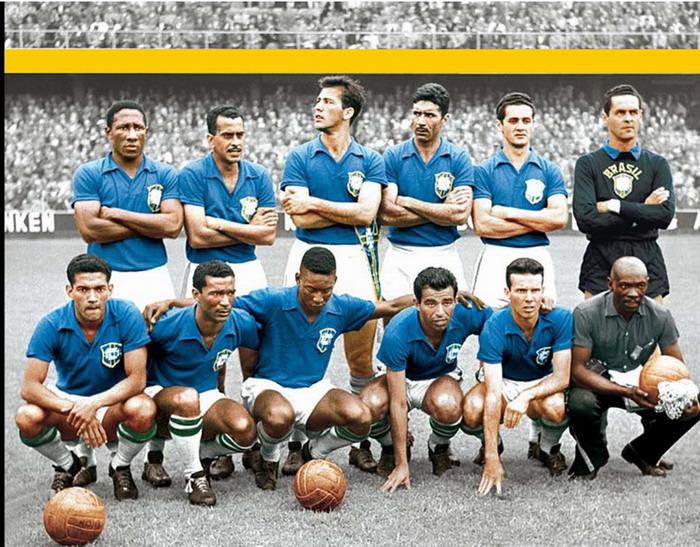In 1958, Brazil clinched its first-ever FIFA World Cup title, a triumph marked by unexpected twists both on and off the pitch. Amidst the pressure of the tournament, a sleeping coach, strategic tactical adjustments, and the emergence of a prodigious 17-year-old PelĂ© combined to rewrite football history. This article delves into the pivotal moments and hidden stories behind Brazil’s groundbreaking victory, exploring how a blend of bold decisions and youthful brilliance propelled the South American nation onto the global stage.
Brazil’s Tactical Revolution and the Role of a Restless Coach
When Brazil arrived in Sweden for the 1958 World Cup, few could have anticipated the strategic metamorphosis that lay ahead. At the heart of this transformation was a coach whose restless spirit refused to settle for conventional wisdom. Despite anecdotes of him sleeping through parts of matches, his mind was constantly at work, reimagining formations and player roles. He shifted the team from the traditional 2-3-5 setup to a more fluid and balanced tactical system that emphasized quick transitions, patient buildup, and spatial intelligence on the field. This approach not only maximized the skill sets of his star players but also allowed Brazil to adapt dynamically to different opponents throughout the tournament.
Key elements of this tactical revolution included:
- Flexible positioning: Players such as Didi and Zito were given the freedom to roam, combining defensive duties with orchestrating attacks.
- Emphasis on ball control: Brazil prioritized maintaining possession, breaking the rhythm of European teams known for direct play.
- Innovative use of PelĂ©: The teenager was not confined to a rigid striker’s role but deployed in pockets where he could exploit space and confound defenders.
| Aspect | Description | Impact |
|---|---|---|
| Formation | 3-4-3 adapted with fluid midfield roles | Balanced attack and defense |
| Defensive Strategy | Man-marking combined with zonal coverage | Neutralized key opposing forwards |
| Attacking Style | Short passes and quick interchanges | Overcame physical European defenses |
| Coach’s Role | Continuous tactical adjustments during games | Maintained unpredictability |
How Pele’s Youth and Skill Transformed the Squad’s Offensive Strategy
At just 17 years old, Pele entered the 1958 World Cup as a relatively unknown talent, but his youthful energy and unparalleled skill rapidly became the cornerstone of Brazil’s offensive overhaul. His ability to read the game, coupled with an instinctive finishing touch, allowed the squad to adopt a more fluid and unpredictable attacking style. Coaches shifted from rigid formations to a system that emphasized quick interchanges and positional freedom, empowering Pele to exploit spaces between defenders. His pace and technical brilliance drew multiple markers, thereby creating opportunities for teammates like Vavá and Garrincha to operate with increased liberty on the flanks.
The squad’s transformation was evident in several key tactical adjustments:
- Implementing a dynamic 4-2-4 formation, which balanced defensive stability with offensive firepower.
- Encouraging overlapping runs from midfielders to overload opposition defenses, leveraging Pele’s knack for delivering decisive passes.
- Adopting a fast-paced counter-attacking approach that capitalized on Pele’s acceleration and vision.
| Offensive Metric | Pre-Pele (1954) | With Pele (1958) |
|---|---|---|
| Average Goals per Match | 1.8 | 3.7 |
| Shots on Target | 7.2 | 12.5 |
| Average Possession (%) | 48 | 58 |
Ultimately, Pele’s influence extended beyond mere statistics – his presence instilled confidence and creativity throughout the squad, igniting Brazil’s journey to their first World Cup title. This youth-driven offensive strategy marked a turning point in international football, blending individual brilliance with collective ingenuity in a way that had never been seen before on the world stage.
Key Lessons from Brazil’s 1958 Triumph for Modern Football Teams
Brazil’s 1958 World Cup victory remains a blueprint for modern football teams aiming to balance youthful exuberance with strategic flexibility. The emergence of a 17-year-old Pele was not just a stroke of luck but a testament to Brazil’s daring approach to nurturing young talent on the world stage. Coaches today can learn from the way Brazil blended raw skill with tactical discipline, showing that giving young players freedom within a clear game plan can unlock extraordinary potential. Creativity on the field, coupled with trust in emerging stars, can redefine team dynamics and provide a decisive edge in major tournaments.
Moreover, the tactical tweaks introduced by Brazil, adapting formations mid-match and optimizing player roles, highlight the importance of flexibility and innovation. The team did not rely solely on a single style of play but adjusted based on the opponent and situation. This adaptive approach is crucial in today’s rapidly evolving football landscape. Coaches and managers can draw from Brazil’s example by incorporating:
- In-game tactical adjustments to exploit opponents’ weaknesses
- Versatile player deployment to maintain unpredictability
- Balanced youth integration to invigorate squad dynamics
| Lesson | Modern Application |
|---|---|
| Trust in Youth | Early integration of promising talents into first teams |
| Tactical Flexibility | Multiple formations adaptable within games |
| Player Roles | Assigning versatile roles to enhance unpredictability |
| Team Mentality | Building resilience through collective confidence |
In Summary
Brazil’s triumph in the 1958 World Cup remains a landmark moment in football history, blending unexpected challenges with groundbreaking talent. From the unconventional leadership of a reportedly sleeping coach to pivotal tactical adjustments and the emergence of 17-year-old PelĂ© on the world stage, this victory not only secured Brazil’s first-ever World Cup title but also set the stage for a new era in the sport. Decades later, the 1958 campaign continues to be studied and celebrated as a masterclass in resilience, innovation, and youthful brilliance.




